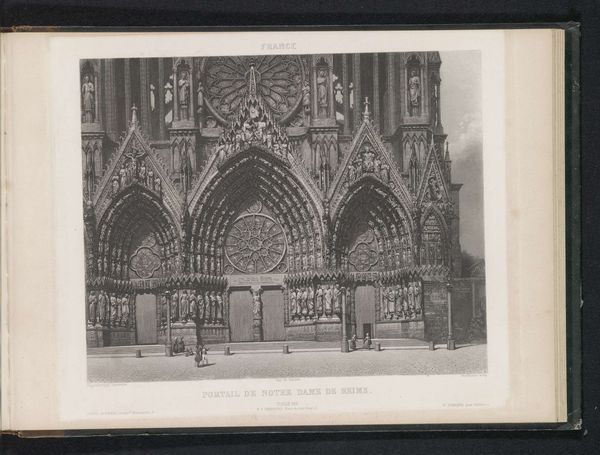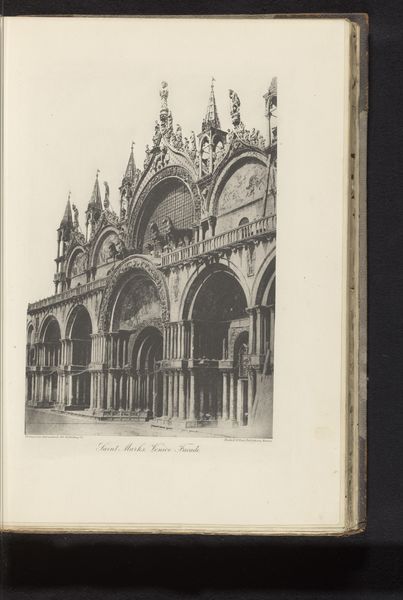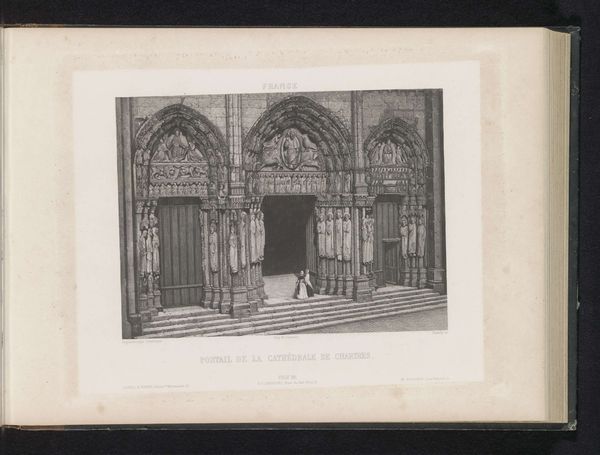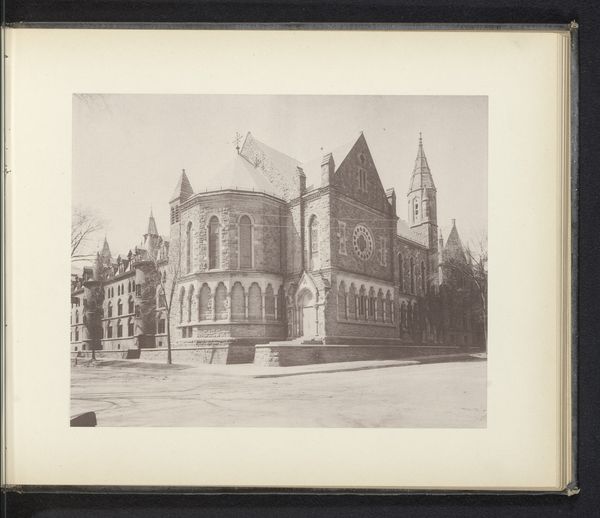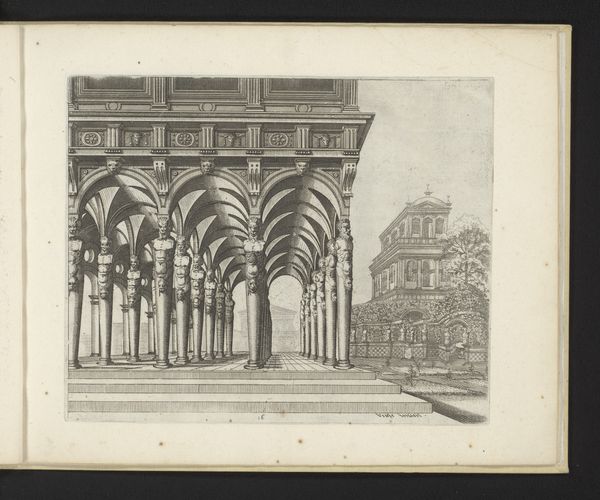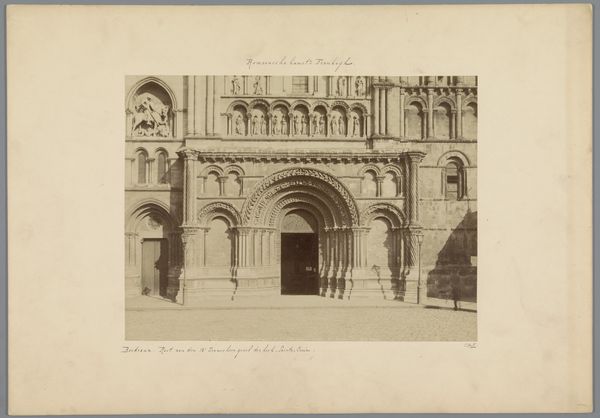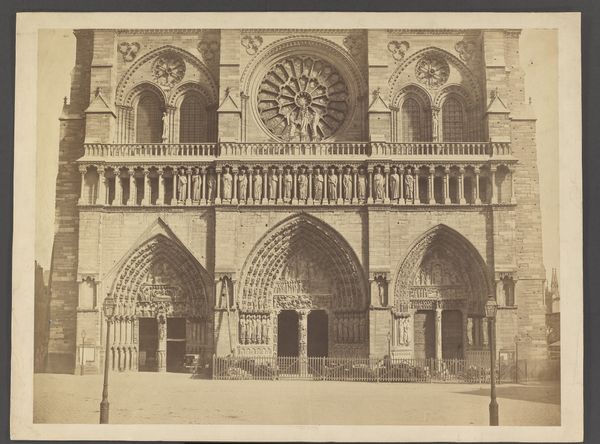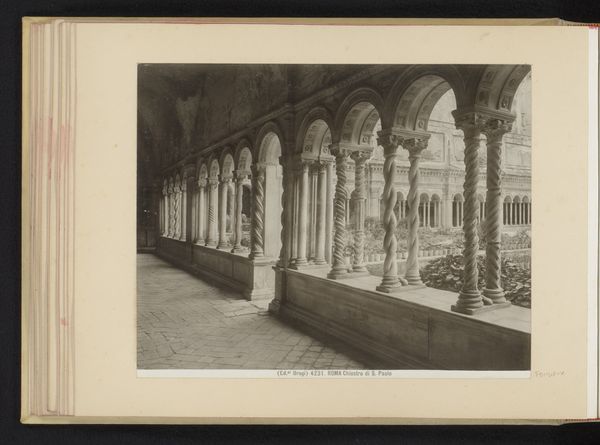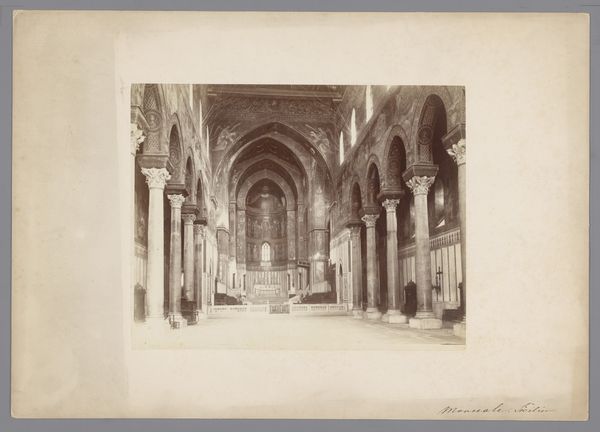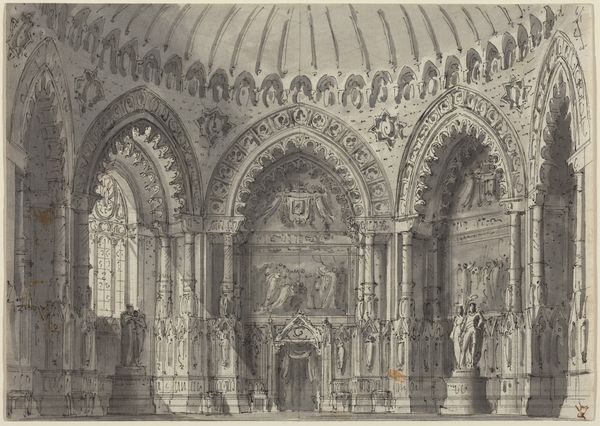
Dimensions: height 208 mm, width 262 mm
Copyright: Rijks Museum: Open Domain
Curator: This print, known as "Toegangsportaal van de Notre-Dame te Parijs", offers us a look at the entrance portal of Notre-Dame Cathedral. It’s estimated to have been created before 1841 by Johann Hürlimann. Editor: My first thought? An immense amount of detail achieved with seemingly simple engraved lines. It's a technical marvel, and gives the stone a solid, imposing presence. Curator: It is remarkable. Prints like these were vital for disseminating architectural ideas and promoting the Gothic Revival. Notre-Dame itself became a focal point, heavily laden with political symbolism following the French Revolution. Editor: Absolutely, but let's consider Hürlimann's choices as a craftsperson. The stark contrast, the cross-hatching used to suggest depth – this is careful labor, designed for mass production, for consumption, and for generating profit for the artist and the publisher. How do we reconcile that tension between art and industry? Curator: We have to remember how printmaking democratized access to art. While certainly a commercial endeavor, it opened up grand architecture, like Notre-Dame, to audiences far beyond Paris. It shifted art away from strictly aristocratic control. Editor: That’s true. And look how the inclusion of a horse and carriage gives us a sense of scale, emphasizing not only the cathedral's size but also suggesting something about the social stratification and transportation systems of the time. It's embedded within daily life, a part of a bigger social machine. Curator: I’d agree, those small elements provide social context, humanizing the architectural grandeur. The artist, by including that everyday element, suggests the monumentality was an integral aspect of French national identity and faith, intertwined with ordinary experience. Editor: Seeing how this work reduces that monumental and politically charged cathedral into something reproducible and portable—into a commodity itself—it reminds me of the powerful role reproductive technologies play in shaping our experience of places and culture. Curator: I agree. The politics inherent within imagery continues. By considering both, we have a fuller grasp of the art and its effects on shaping history and collective memory.
Comments
No comments
Be the first to comment and join the conversation on the ultimate creative platform.
